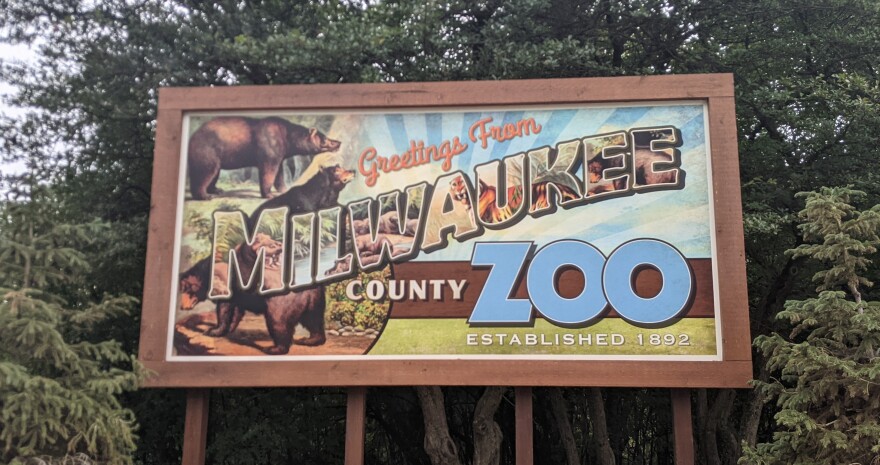People have a lot of questions when they come to the Milwaukee County Zoo. But the most the important one may be this: how did all of these animals even get here?
That question can be interpreted a couple ways: how does a zoo get permission to add a new animal and how do the animals physically get to Wisconsin?

Despite some common misconceptions, accredited zoos no longer take animals from the wild, except in extraordinary circumstances. The zoo also can’t order up a family of elephants or gorillas on a whim. There’s an in-depth process and it starts with the Association of Zoos & Aquariums, known as the AZA.
"There’s roughly 250 zoos throughout the country that belong to the AZA and are accredited," said Jennifer Dilliberti from the Milwaukee County Zoo. "So when we look to have an animal transferred to another zoo, it’s all based on species survival plans in that they look at all the zoos that are accredited as one population, so when an animal needs to move a lot of times it’s for genetic reasons."
That species survival plan, also known as an SSP, is the key to knowing which animals should end up in Milwaukee or any other accredited zoo around the country. Patricia Khan, Curator of Primates and Small Mammals at the Milwaukee County Zoo, explained how these plans work.
"The species survival plans are made up of experts in the field of the captive population. Everything from vet advisers and education advisers, but also behavioralists and people who really manage, for instance gorillas," Khan said. "And the SSP, every few years, will bring out a breeding and transfer plan and that’s based on the viability of the population, where the population is now, and where they want the population to be in five generations or 100 years from now."

One of the main goals is to create a genetically diverse group of animals in captivity to avoid inbreeding and keep their lines healthy. There are other things they take into account, like herd dynamics at each facility, an animals’ temperament, and its natural life cycle.
"You move animals at certain ages," said Khan. "You know, young females would naturally move out in the wild at a certain age and you try to keep within those limits. That plays a huge role into the whole decision on when we move animals. It’s not something that you take on lightly."

Once the association and the zoos have figured out which animal should come to Milwaukee, they need to figure out how it’ll get here. You can’t exactly pack gorillas into the family mini van, but it does take a family effort to make them comfortable with the journey.
"They do work with that animal for, you know, sometimes months to get them used to maybe a crate, to get them familiar with the crate, they know who’s going with them," Dilliberti said. "That’s all planned out well in advance of their trip out."
Khan describes how this played out when a family of gorillas was recently transferred from the Columbus zoo to Milwaukee.
"We sent our keepers to Columbus a few days before the shipment so that those keepers could spend time with the Columbus zookeepers, they could talk, and they could also spend time with the gorillas there, get to know them and the gorillas could also get to know them," Khan said. "Then the transfer happened and everybody came together. So the animals were never left alone. All the animals could see each other on that transport, they were in the same truck, they could smell and see each other, but they also had their recognized staff with them."

Like any family trip, there are different ways to get to the animals’ final destination. Those gorillas came to Milwaukee by truck, but if an animal is coming from farther away they may come by plane – both cargo and commercial flights, when necessary. The main goal is to keep them comfortable and ensure their safety every step of the way.
Reaching their new home in Milwaukee isn’t the end of the journey. It’s just the beginning. Over the next weeks and months they’ll be introduced to their new home and family. It’s the start of their new lives and the beginning of our journey with them at the Milwaukee County Zoo.
_







